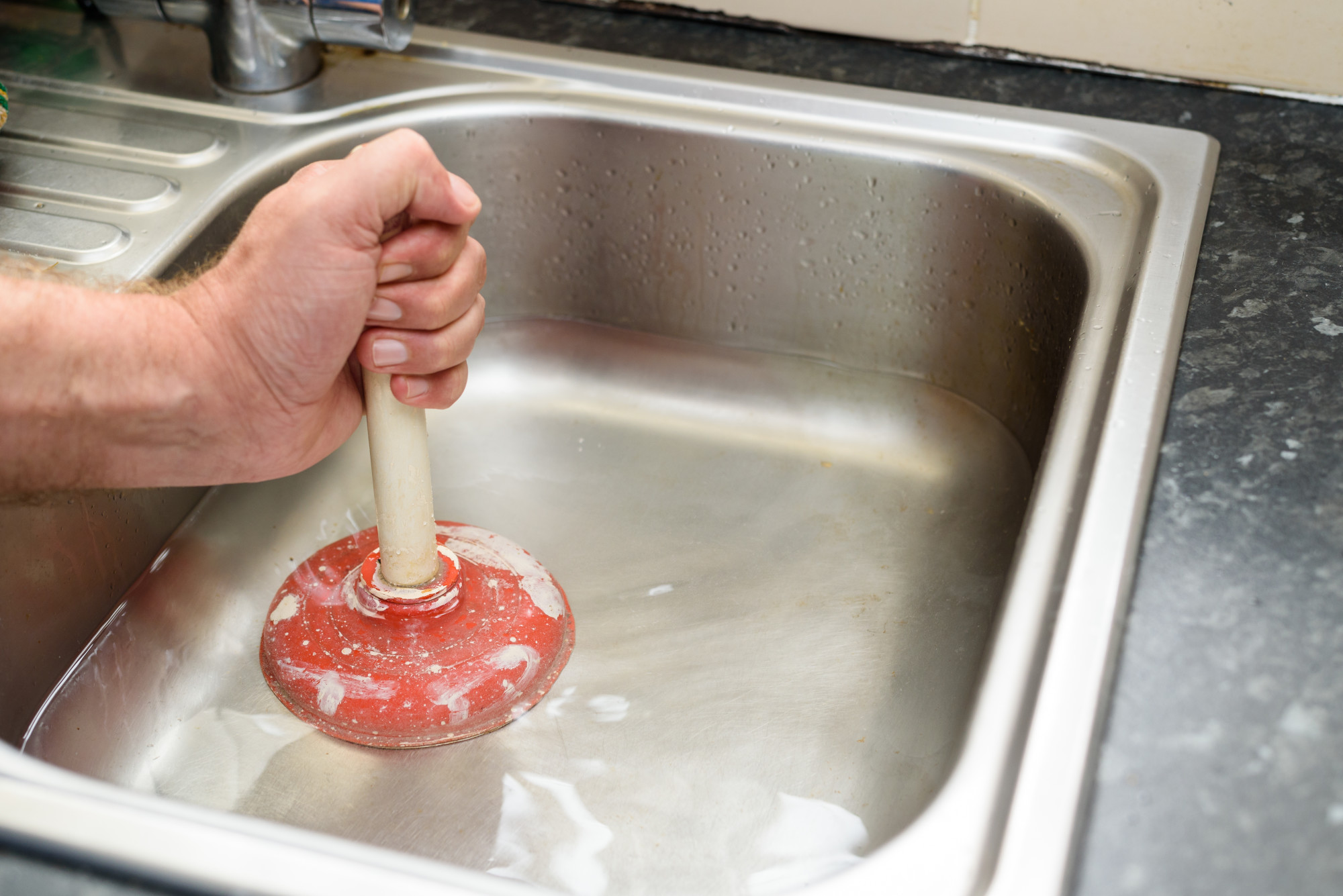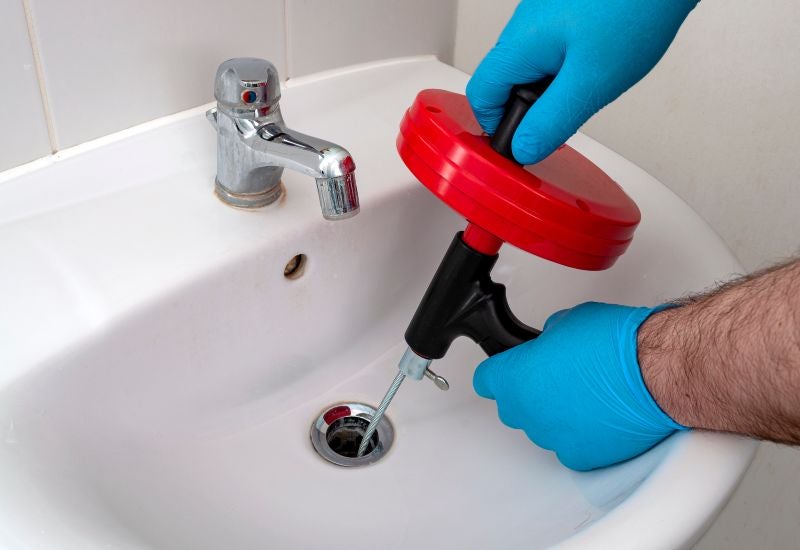How to Properly Apply Plunger and Drain Cleaners: Expert Advice
How to Properly Apply Plunger and Drain Cleaners: Expert Advice
Blog Article
Are you trying to locate selective information on How To Use Your Toilet Plunger Correctly in 5 Easy Steps?

Intro
Proper maintenance of house drains is necessary for avoiding blockages and ensuring smooth water flow. Among the trick devices in every homeowner's toolkit is the plunger, together with numerous drainpipe cleansers designed to tackle stubborn blockages successfully. This write-up discovers just how to make use of bettors and drainpipe cleansers properly to maintain your drains pipes streaming easily.
Section 1: Understanding Plungers
Sorts of Plungers
There are numerous sorts of bettors available, each created for various types of drains and blocks. One of the most usual types include cup bettors, flange bettors, and accordion bettors.
Just How Plungers Job
Plungers work on the principle of producing pressure and suction to displace obstructions. When properly applied over a drainpipe, they produce a vacuum cleaner that can pull out particles or separate clogs.
Selecting the Right Bettor
Choosing the appropriate plunger relies on the sort of drain and the nature of the obstruction. Cup plungers are excellent for sinks and tubs, while flange plungers are better fit for commodes due to their design.
Common Errors with Plungers
Preventing these blunders makes certain effective plunging: improper seal around the drain, insufficient force, and unclear bordering particles.
Area 2: Utilizing Plungers Successfully
Preparation
Before diving, make certain the bettor covers the drain completely and forms a limited seal. Clear any type of visible particles around the drainpipe opening.
Technique
Begin with mild plunging movements to construct suction. Increase pressure progressively, using a stable rhythm. Repeat as needed till the drain removes.
Fixing Tips
If diving does not function, try adjusting the seal, applying petroleum jelly for a much better seal, or making use of a various sort of bettor.
Area 3: Understanding Drain Cleaners
Types of Drain Cleaning Company
Drain pipes cleaners can be chemical or enzymatic. Chemical cleaners make use of strong chemicals to liquify blockages, while chemical cleansers utilize all-natural enzymes to break down organic matter.
How Drain Cleaners Work
Chemical cleansers react with obstructions to liquify them, while chemical cleansers break down natural products like hair and oil without hurting pipes.
Security Considerations
Always wear gloves and eye protection when making use of chemical drainpipe cleansers. Make sure appropriate ventilation and follow supplier guidelines very carefully.
Eco-Friendly Alternatives
Think about using vinegar and cooking soda or enzyme-based cleaners for green choices that are safer for pipelines and the environment.
Area 4: Using Drainpipe Cleaners Successfully
Application Techniques
Put chemical cleansers directly right into the drainpipe opening. Permit them to benefit the recommended time before flushing with warm water. Chemical cleansers should sit overnight.
Safety measures
Prevent blending various sorts of cleansers, as this can generate toxic fumes. Never use chemical cleaners along with a plunger, as splashing can happen.
Dealing With Persistent Clogs
For consistent obstructions, consider using a pipes serpent or calling a specialist plumbing to prevent damage to pipes.
Final thought
In conclusion, understanding exactly how to use plungers and drainpipe cleansers efficiently is vital for maintaining healthy and balanced plumbing systems. By choosing the right devices and techniques, homeowners can deal with minor blockages and prevent significant plumbing problems down the line.
How To Properly Use A Plumbing Snake To Clear Drains
When any drain clogs in our home arise, we tend to gravitate toward the plunger and little else. In cases where the plunger and its vacuum-created pressure are not able to clear clogs, many immediately move to harmful chemicals or simply call their plumber to fix the issue.
we’re happy to help with all drain cleaning needs and concerns. This includes informing you on a few other home remedies you may have at your disposal for minor to moderate clogs, one of which is the use of a plumbing snake. Many people have never used one of these before – let’s go over the steps to take when your drain clogs and you have a plumbing snake available.
Attempt Plunger Use
The first step here, as we noted above, should indeed be to grab your plunger when you notice a drain clog and attempt to resolve it this way. If you’re unsure how to use a particular type of plunger, our plumbers can answer any questions you have. If this doesn’t do the trick, however, you move on to the snake.
Locate And Prepare Snake
A plumbing snake is a metal or plastic device that’s generally about a quarter of an inch thick. It’s design with significant extensions, meant to reach down into your clogged drain and push the clog out. Snakes also contain drain augers that will latch onto and push stubborn blockages.
If your plunger doesn’t clear a clog, locate your snake and bring it to the drain in question. We also recommend keeping a bucket nearby to collect the clog once you pull it out, plus we’d advise wearing goggles and possibly protective gloves.
Feed Snake
Once you’re ready to go, feed the snake slowly down the drain, using the crank device it comes with to keep it moving until it finds the clog. Once this happens, much of the clog will be latched onto the coil so you can pull it out, while the rest will simply break up and flow downward.
Detach Debris
Remove the snake slowly from the drain, and once you’ve done so, pick off any debris that’s stuck to the coil. This is another area where wearing gloves is a must.
Flush Drain
Finally, take a few minutes to ensure the snake has done its job correctly. If you’ve been using it on a toilet, flush the toilet a couple times and make sure everything flows well. If you’ve used it on a different drain, flush it with some room temperature water.
https://www.mybuddytheplumber.com/blog/how-to-properly-use-a-plumbing-snake-to-clear-drains/

Application Techniques
Put chemical cleansers directly right into the drainpipe opening. Permit them to benefit the recommended time before flushing with warm water. Chemical cleansers should sit overnight.
Safety measures
Prevent blending various sorts of cleansers, as this can generate toxic fumes. Never use chemical cleaners along with a plunger, as splashing can happen.
Dealing With Persistent Clogs
For consistent obstructions, consider using a pipes serpent or calling a specialist plumbing to prevent damage to pipes.
Final thought
In conclusion, understanding exactly how to use plungers and drainpipe cleansers efficiently is vital for maintaining healthy and balanced plumbing systems. By choosing the right devices and techniques, homeowners can deal with minor blockages and prevent significant plumbing problems down the line.
How To Properly Use A Plumbing Snake To Clear Drains
When any drain clogs in our home arise, we tend to gravitate toward the plunger and little else. In cases where the plunger and its vacuum-created pressure are not able to clear clogs, many immediately move to harmful chemicals or simply call their plumber to fix the issue.
we’re happy to help with all drain cleaning needs and concerns. This includes informing you on a few other home remedies you may have at your disposal for minor to moderate clogs, one of which is the use of a plumbing snake. Many people have never used one of these before – let’s go over the steps to take when your drain clogs and you have a plumbing snake available.
Attempt Plunger Use
The first step here, as we noted above, should indeed be to grab your plunger when you notice a drain clog and attempt to resolve it this way. If you’re unsure how to use a particular type of plunger, our plumbers can answer any questions you have. If this doesn’t do the trick, however, you move on to the snake.
Locate And Prepare Snake
A plumbing snake is a metal or plastic device that’s generally about a quarter of an inch thick. It’s design with significant extensions, meant to reach down into your clogged drain and push the clog out. Snakes also contain drain augers that will latch onto and push stubborn blockages.
If your plunger doesn’t clear a clog, locate your snake and bring it to the drain in question. We also recommend keeping a bucket nearby to collect the clog once you pull it out, plus we’d advise wearing goggles and possibly protective gloves.
Feed Snake
Once you’re ready to go, feed the snake slowly down the drain, using the crank device it comes with to keep it moving until it finds the clog. Once this happens, much of the clog will be latched onto the coil so you can pull it out, while the rest will simply break up and flow downward.
Detach Debris
Remove the snake slowly from the drain, and once you’ve done so, pick off any debris that’s stuck to the coil. This is another area where wearing gloves is a must.
Flush Drain
Finally, take a few minutes to ensure the snake has done its job correctly. If you’ve been using it on a toilet, flush the toilet a couple times and make sure everything flows well. If you’ve used it on a different drain, flush it with some room temperature water.
https://www.mybuddytheplumber.com/blog/how-to-properly-use-a-plumbing-snake-to-clear-drains/

Hopefully you liked our piece about . Many thanks for taking time to read our content. Do you know about somebody who is excited by the niche? Feel free to promote it. We enjoy reading our article about A Guide to Plungers (and How to Use Them).
Book Inspection Report this page